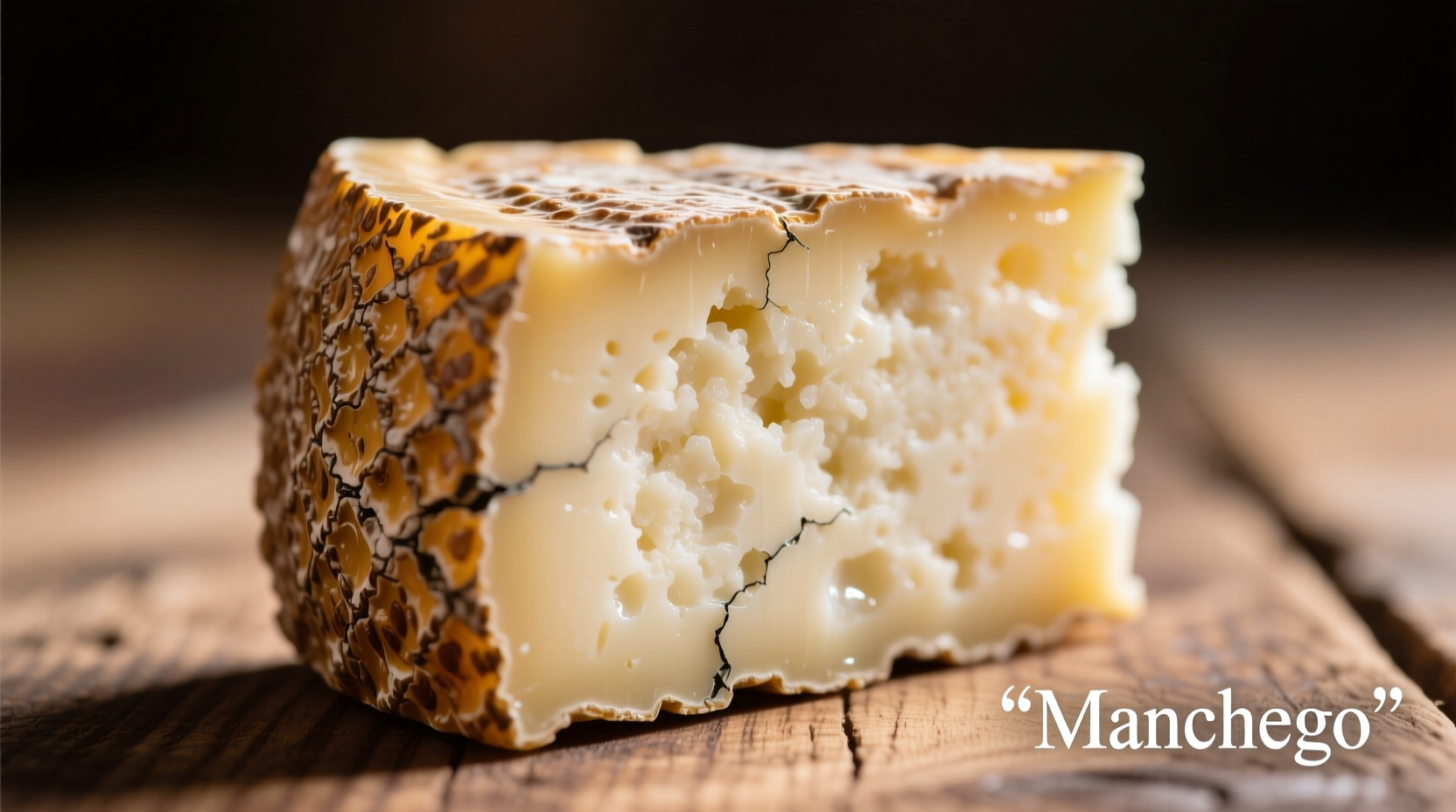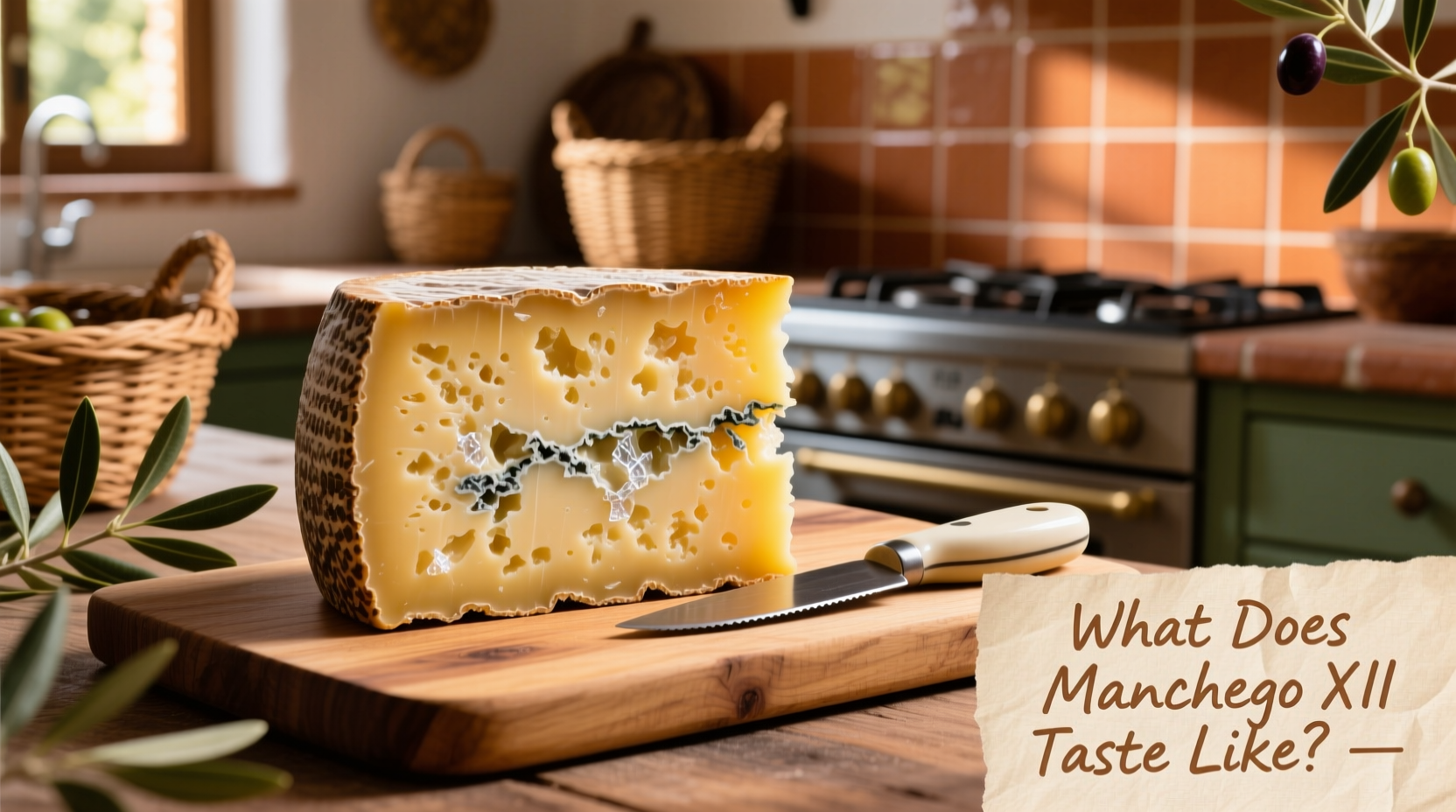Discover exactly what makes Spain's most celebrated sheep's milk cheese so uniquely captivating. Whether you're encountering Manchego for the first time or seeking to deepen your appreciation, this guide delivers precise sensory details that transform how you experience this Protected Designation of Origin (PDO) treasure.
Your First Encounter: The Immediate Sensory Experience
When you first approach authentic Manchego, your senses engage in a multi-layered dialogue. The distinctive herringbone pattern pressed into its rind hints at traditional esparto grass molds used for centuries in Spain's La Mancha region. As you bring it closer, a subtle grassy aroma emerges - not overpowering, but reminiscent of the native thyme and rosemary that flourish in Manchegan pastures where the Merino sheep graze.
Cutting into Manchego reveals its true character. Young varieties (aged 2-3 months) yield with gentle resistance, their pale ivory interior showing minimal crystallization. The initial taste presents clean, lactic notes with a refreshing tang similar to cultured butter, followed by subtle citrus undertones that dance across your palate. This fresh expression makes Manchego fresco exceptionally versatile in both cooking and fresh applications.

How Aging Transforms Manchego's Flavor Journey
Manchego's flavor evolution follows a precise trajectory dictated by Spain's Denominación de Origen Protegida regulations. As aging progresses, enzymatic reactions transform both texture and taste in predictable, measurable ways:
| Aging Period | Texture Characteristics | Flavor Profile | Best Applications |
|---|---|---|---|
| Fresco (2-3 months) | Springy, slightly moist | Citrus notes, mild tang, fresh milk sweetness | Salads, sandwiches, fresh tapas |
| Semicurado (3-6 months) | Firm but yielding | Nutty undertones, caramel hints, balanced acidity | Grating, cheese boards, roasted vegetables |
| Curado (6-12 months) | Dense, occasional crystals | Walnut, toasted bread, complex earthiness | Standalone tasting, wine pairing, fruit accompaniments |
| Viejo (12-24 months) | Firm, crystalline crunch | Deep caramel, butterscotch, subtle sheep's milk sweetness | Precise portioning, after-dinner cheese courses |
This aging progression reflects traditional Spanish cheesemaking wisdom documented by the Consejo Regulador de la Denominación de Origen Queso Manchego. Their official guidelines specify exact aging parameters that ensure consistent quality and authentic flavor development across certified producers.
Authentic Manchego vs. Imitations: What Truly Sets It Apart
Many cheeses attempt to replicate Manchego's profile, but only authentic versions carry the distinctive characteristics derived from 100% Manchega sheep's milk and traditional production methods. The Protected Designation of Origin status guarantees specific production elements that directly impact flavor:
- Milk source: Exclusively from Manchega breed sheep grazing on native La Mancha vegetation
- Coagulation: Traditional vegetable rennet from cardoon thistle (Cynara cardunculus)
- Aging environment: Natural caves or climate-controlled facilities mimicking traditional conditions
- Geographic boundaries: Strictly limited to Spain's La Mancha region
When comparing Manchego to similar cheeses, key differences emerge. Unlike Italian Pecorino Romano (which uses similar milk but different rennet and aging), authentic Manchego displays more nuanced grassy notes rather than aggressive saltiness. Compared to French Roquefort (another sheep's milk cheese), Manchego lacks blue mold veins but shares some earthy complexity in aged varieties.
Maximizing Your Manchego Experience: Practical Serving Insights
Temperature dramatically affects Manchego's flavor expression. Remove aged varieties from refrigeration at least 45 minutes before serving to allow complex aromas to fully develop. Younger Manchego benefits from 20-30 minutes of warming to soften its natural tang.
Traditional Spanish pairings enhance Manchego's distinctive profile:
- Young Manchego: Quince paste (membrillo), fresh figs, light-bodied Rioja
- Aged Manchego: Extra virgin olive oil drizzle, honeycomb, robust red wines like Tempranillo
- Unexpected pairing: Aged balsamic vinegar intensifies caramel notes in viejo varieties
For culinary applications, grate semicurado Manchego over roasted vegetables or incorporate into traditional Spanish tortillas. The cheese's natural salt content means you'll need less added salt in recipes - a characteristic noted in culinary research from Spain's National Institute of Food Technology.
Buying Guide: Selecting Authentic Manchego
Look for these markers of genuine Manchego when purchasing:
- Official seal: The DOP/Queso Manchego logo prominently displayed
- Rind pattern: Distinctive diagonal herringbone design from traditional molds
- Labeling: Clear indication of aging period (fresco, semicurado, curado, or viejo)
- Origin statement: "Product of Spain" with specific La Mancha region reference
Reputable retailers like the Spanish-based online marketplace Quesos Manchegos provide traceability from farm to table, ensuring you receive authentic product. When stored properly in cheese paper at 45°F (7°C), aged Manchego maintains optimal flavor for 3-4 weeks after opening.
Preserving Manchego's Heritage: Why Authenticity Matters
The Consejo Regulador's strict oversight protects not just flavor integrity but an entire cultural ecosystem. Their documentation shows how traditional Manchego production supports sustainable grazing practices across 15,000 square kilometers of protected Mediterranean grassland. Each authentic wheel represents centuries of cheesemaking wisdom that industrial imitations simply cannot replicate.











 浙公网安备
33010002000092号
浙公网安备
33010002000092号 浙B2-20120091-4
浙B2-20120091-4